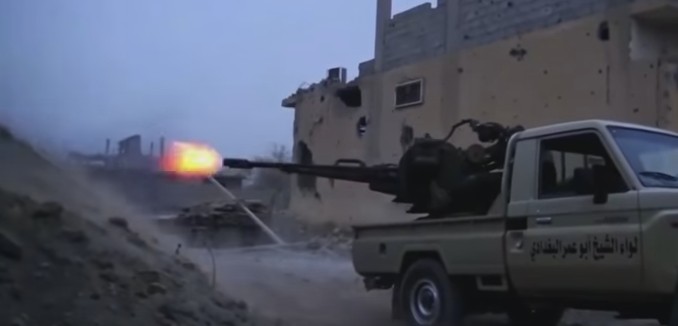Four Iranian special forces soldiers were killed in Syria, a week after Iran announced that elite units would be deployed to help Syrian dictator Bashar al-Assad stay in power.
The four commandos, who are the first members of the official Iranian armed forces to die in the Syrian civil war, were sent as military advisers, Iran’s Tasnim News Agency reported. Until now, most Iranian casualties in Syria had been part of Iran’s Islamic Revolutionary Guard Corps (IRGC). Iran acknowledged the presence of IRGC troops in Syria amid mounting losses last October. Iran reportedly withdrew most of its IRGC troops in December.
Secretary of State John Kerry said last week that Iran should “abide by the good-neighborhood principle” if it wants to have good relations with its Sunni neighbors.
In How the Iran Entente Caused the Syria Crisis, which was published in the April 2016 issue of The Tower Magazine, Kyle Orton described the Obama administration’s calculations in allowing Iran to build a mostly unchallenged foothold in Syria.
The nuclear deal signed with Iran in July was advertised by the Obama administration on the “narrowest possible terms” as an arms control agreement, but behind this political sell were “grander ambitions” to “open up relations with Tehran and [make it] part of a transformation in the Middle East.” The President intended to lead an “equilibrium” in the region between Iran and its neighbors, as he laid out more clearly in his recent series of interviews with Jeffrey Goldberg of The Atlantic. In short, the nuclear deal was not about stopping Iran’s nuclear-weapons program; it was about removing the nuclear question from U.S.-Iranian relations so the U.S. could draw Iran into the Middle East security architecture and draw down the U.S. investment in the region.
Over time, the threat of ISIS would be used to justify the policy of détente with Iran. President Obama even engaged in an (unrequited) letter-writing campaign to Supreme Leader Ali Khamenei, which by the end of 2014 was using the apparently-common threat of ISIS as the facilitator of an entente. But the determination of the administration to pursue this course began before ISIS was on the horizon: Obama’s letters to Khamenei began in 2009. Nor did the strategic change toward engagement originate on the Iranian side, as the administration would later frame it, with the election of the “moderate” president Hassan Rouhani in June 2013. To the contrary, the initial secret contacts that led to the interim deal in November 2013 had begun in July 2012 and more substantive meetings began in March 2013. …
For Iran, the scheme to have the international community view Assad as the least bad option has essentially worked, making the U.S. into Assad’s air force. The U.S. told Iran in advance of beginning airstrikes in Syria that Assad was off-limits and the only target was ISIS—though the U.S. also later struck local insurgents. Possessed of an American security guarantee, Assad focused his energies on eliminating the moderate opposition to create the binary situation—the dictator or the terrorists—he had always wanted and had propagandized was the case all along. With U.S. forces back in Iraq, where Iran had taken over the security sector with the very same Special Groups that murdered Americans, Tehran was able to add the additional threat: if the U.S. moved against Assad, it would reactivate the militias’ campaign against U.S troops.
[Photo: wochit News / YouTube ]




